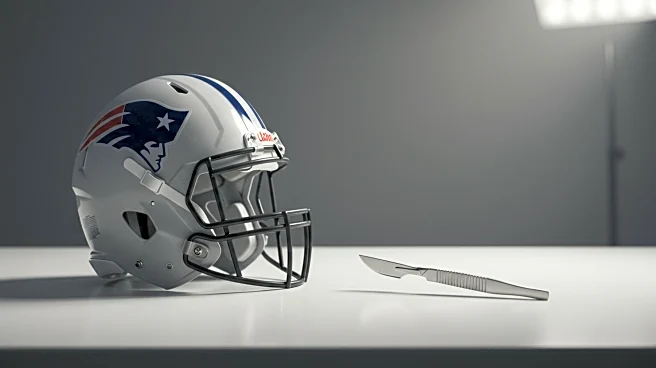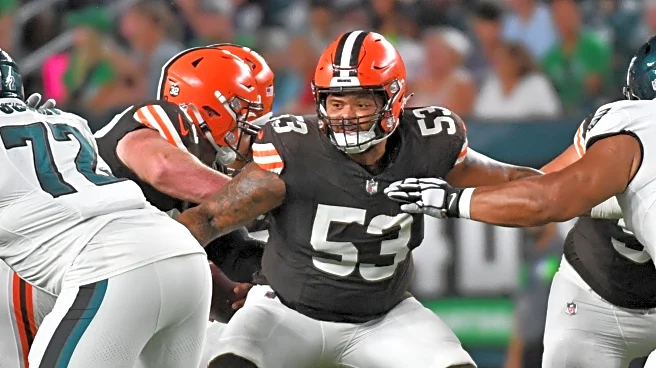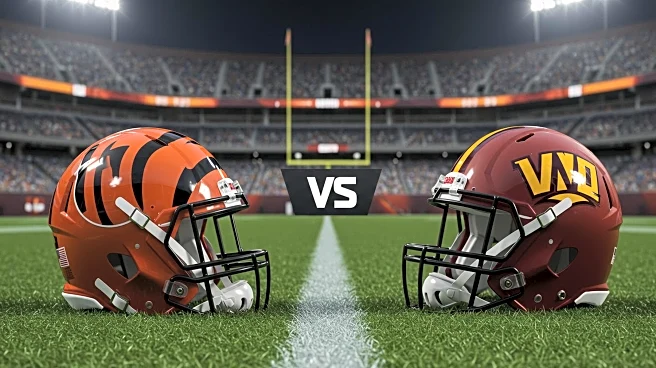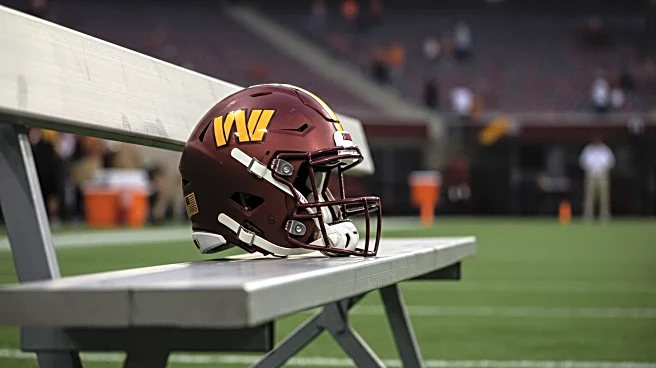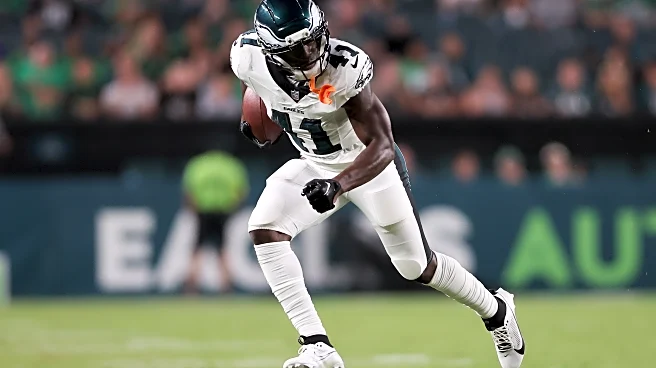What's Happening?
New England Patriots wide receiver Ja'Lynn Polk is set to miss the entire 2025 NFL season following a shoulder surgery. Polk sustained the injury during a preseason game against the Washington Commanders on August 8, where he was hurt while attempting to block. This marks the second shoulder surgery for Polk, who previously underwent a similar procedure last March, causing him to miss offseason camps and the start of training camp. Polk, a second-round draft pick in 2024, has had a limited impact on the field, recording 12 receptions for 87 yards and two touchdowns in 15 games, including seven starts. His college career at Washington was more prolific, with 69 catches for 1,159 yards and nine touchdowns in his final season.
Why It's Important?
Polk's absence is a significant setback for the New England Patriots as they prepare for the upcoming season. The team will need to adjust their offensive strategy and potentially seek additional talent to fill the void left by Polk. His injury also highlights the physical demands and risks associated with professional football, particularly for players recovering from previous injuries. The Patriots, aiming to improve their performance, will have to rely on other receivers to step up and fill the gap. This development could impact team dynamics and player roles, influencing the Patriots' competitiveness in the league.
What's Next?
The Patriots will likely explore options to strengthen their receiving corps, either through trades, free agency, or promoting from within their existing roster. Coaches and management will need to strategize on how to adapt their offensive playbook to compensate for Polk's absence. Additionally, Polk will focus on rehabilitation and recovery, aiming to return to the field in the future. The team and fans will be watching closely to see how the Patriots manage this challenge and whether they can maintain their performance levels without Polk.
Beyond the Headlines
Polk's injury underscores the broader issue of player health and safety in the NFL, prompting discussions on the adequacy of current protective measures and medical support for athletes. It also raises questions about the long-term impact of repeated injuries on players' careers and well-being. The situation may lead to increased scrutiny on how teams handle player injuries and recovery processes, potentially influencing league policies and practices.
